Easter Island, also known as Rapa Nui, is a small island located in the southeastern Pacific Ocean.
The island is known for its fascinating history, as it is believed that the Rapa Nui people, who are the island’s native inhabitants, were responsible for carving and erecting the giant Moai statues that can still be found on the island today.
However, Easter Island is not just famous for its human history, as it is also home to a diverse range of bird species. From ground-nesting birds to seabirds, the island’s avian population is an integral part of its unique ecosystem.
Here, we will take a closer look at the birds of Easter Island, their behaviors, and their role in the island’s natural environment.
1. Chilean Tinamou
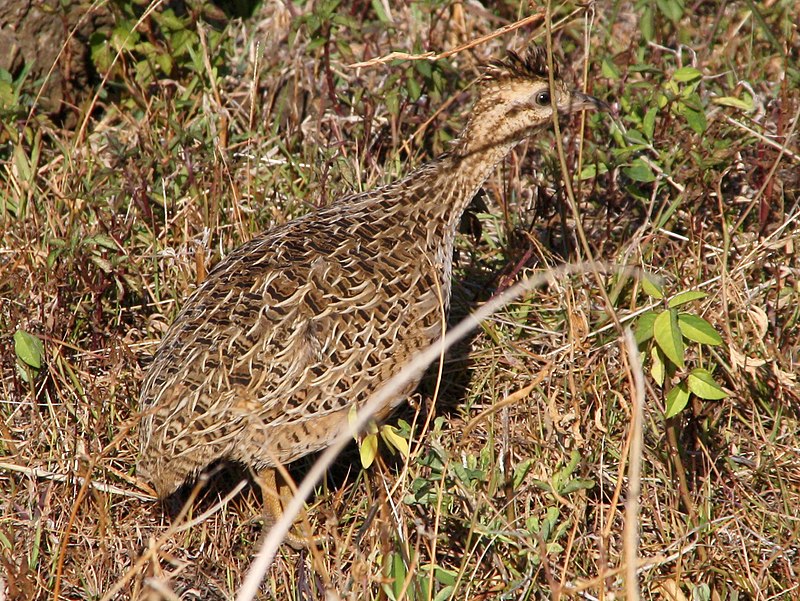
The Chilean tinamou is a type of bird typically found in high altitude shrubland in central Chile. It belongs to the family Tinamidae and are part of the ratites group, which evolved from prehistoric flying birds.
Although they can fly, it isn’t very strong flight compared with other birds. They have short wings and legs that make them well-adapted for their habitat. The plumage color varies depending on season or region but usually has brown mottled streaks on its back while its face is greyish white with black stripes along each side of neck and eyes having yellow irises.
Its diet consists mainly of fruits, seeds, insects and small invertebrates like snails or worms as well as some leaves or buds when available during winter months.Scientific classification:
| Kingdom | Animalia |
| Phylum | Chordata |
| Class | Aves |
| Infraclass | Palaeognathae |
| Order | Tinamiformes |
| Family | Tinamidae |
| Genus | Nothoprocta |
| Species | N. perdicaria |
Also Featured In: Most Common Birds Found in Chile,
2. Frigatebird
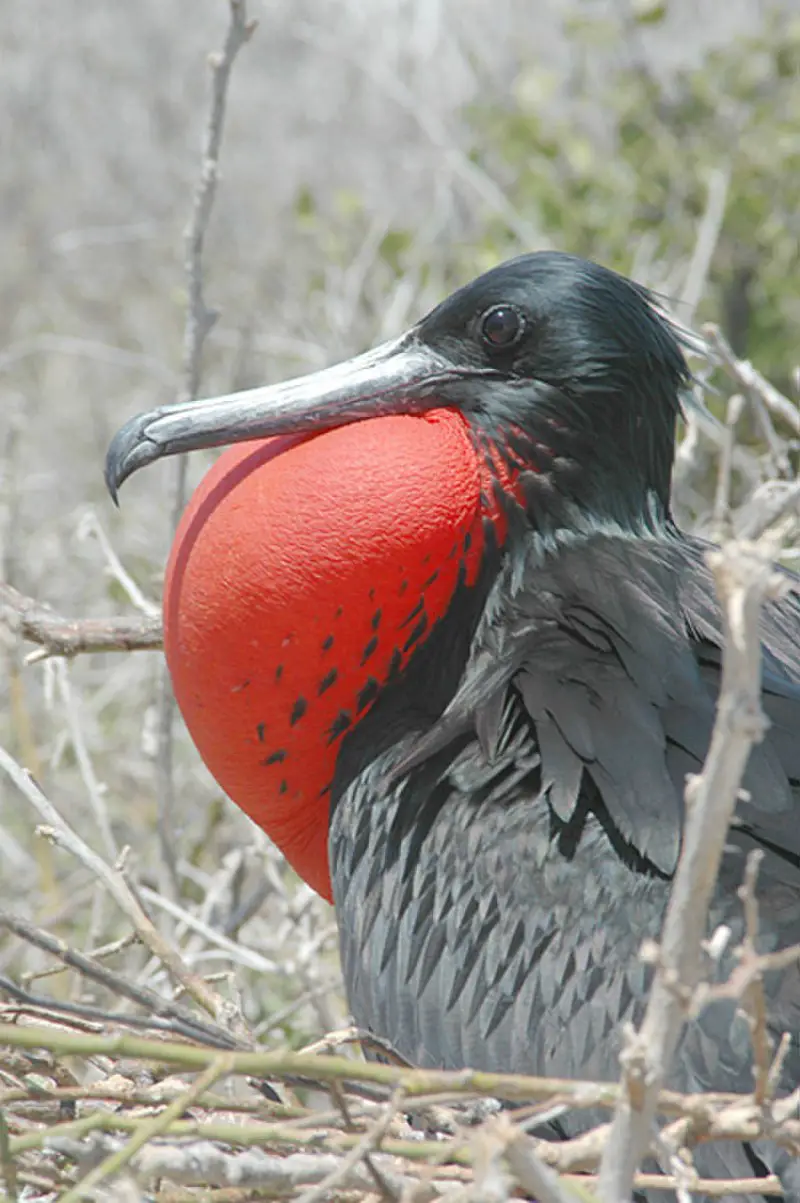
Frigatebirds are a beautiful and mysterious family of seabirds, found in all tropical and subtropical oceans. The five extant species have glossy black plumage, long forked tails, and lengthy hooked bills.
During the breeding season males display a bright red gular pouch which they inflate to attract mates. Females have white underbellies year-round giving them an elegant contrast against their darker feathers.
They spend most of their lives soaring with minimal effort over warm ocean waters seeking food such as fish or squid taken from the surface or plucked out of midair by other birds.
Frigatebirds often nest on isolated islands due to lack of predators yet still manage to travel incredibly large distances between feeding grounds every day making them truly remarkable creatures.Scientific classification:
| Kingdom | Animalia |
| Phylum | Chordata |
| Class | Aves |
| Order | Suliformes |
| Family | Fregatidae Degland & Gerbe, 1867 |
| Genus | Fregata Lacépède, 1799 |
Also Featured In: Birds of Ecuador, Birds You’ll Find in the Sea
3. Brown Noddy
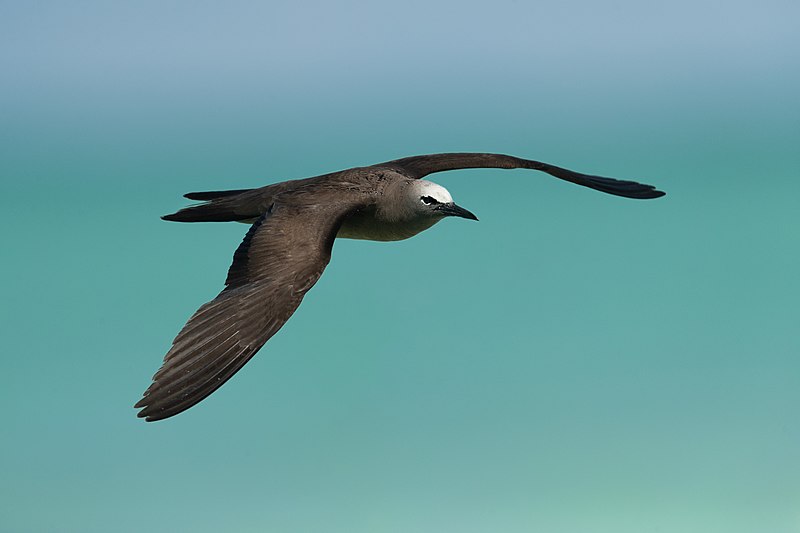
The Brown Noddy is a species of seabird in the Laridae family. It’s the largest of its kind, and can be distinguished from others by its dark brown plumage, which stands out compared to other noddies with black feathers.
Found around tropical oceans worldwide, it inhabits areas such as Hawaii and Australia all the way to Tuamotu Archipelago in Polynesia.
During breeding season they form large colonies on remote islands where their nests are constructed using twigs and leaves situated atop trees or shrubs – typically located near water sources like lagoons or estuaries so they have access to food items like small fish and squid that make up their diet.
As highly social birds they often engage in synchronised flying displays over nesting sites before returning back home at nightfall.Scientific classification:
| Kingdom | Animalia |
| Phylum | Chordata |
| Class | Aves |
| Order | Charadriiformes |
| Family | Laridae |
| Genus | Anous |
| Species | A. stolidus |
Also Featured In: Mauritius birds, Brown Birds of Florida
4. Red-Tailed Tropicbird
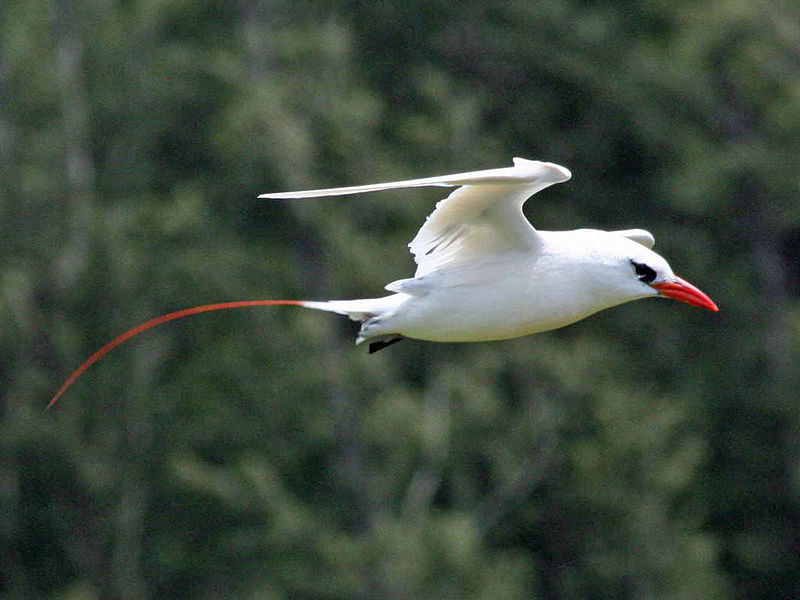
The Red-tailed Tropicbird is an exotic seabird found in tropical areas of the Indian and Pacific Oceans. It has a striking appearance, with mostly white feathers and a black mask covering its eyes.
Its bill is bright red, making it stand out against its pale plumage. Both males and females have similar looks to one another – unlike many other birds species where the male looks significantly different from that of the female.
Described by Pieter Boddaert in 1783, this impressive bird can be seen soaring through tropical skies looking for food either alone or within small flocks made up of several individuals at once.Scientific classification:
| Kingdom | Animalia |
| Phylum | Chordata |
| Class | Aves |
| Order | Phaethontiformes |
| Family | Phaethontidae |
| Genus | Phaethon |
| Species | P. rubricauda |
Also Featured In: Common Republic of Nauru Birds, Birds that Live in the Ocean
5. Sooty Tern
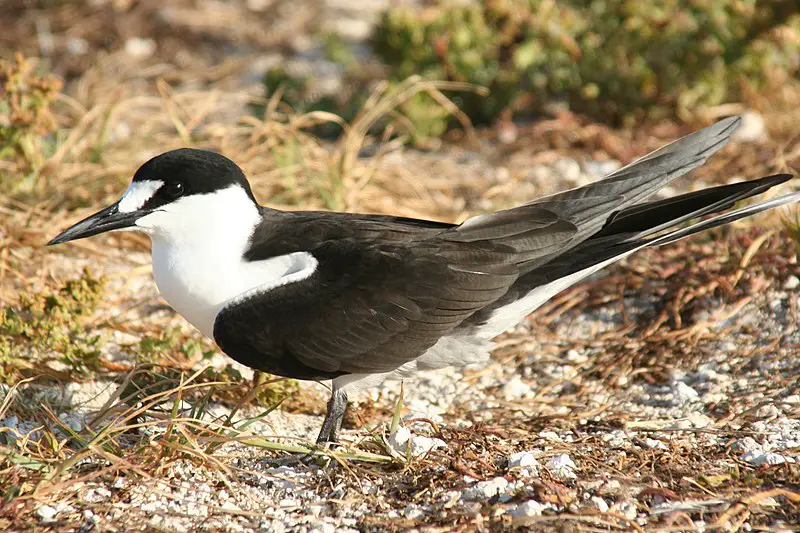
The Sooty Tern is a bird that lives in the tropics of all three major oceans. It is found mostly on remote islands where it returns to nest and breed during its seasonal journeys.
This member of the Laridae family has been described by Carl Linnaeus as Sterna fuscata, though more recently it was given its current name Onychoprion fuscatus.
The sooty tern has dark grey wings and back, with white underneath for camouflage against predators when flying over open ocean waters; they are also adept at diving underwater in search of food such as fish or crustaceans which make up their diet.
They live in colonies and usually lay two eggs each year which incubate for about four weeks before hatching into fluffy little chicks.Scientific classification:
| Kingdom | Animalia |
| Phylum | Chordata |
| Class | Aves |
| Order | Charadriiformes |
| Family | Laridae |
| Genus | Onychoprion |
| Species | O. fuscatus |
Also Featured In: Maldives birds, Birds That Live in Ascension Island
6. Spectacled Tern
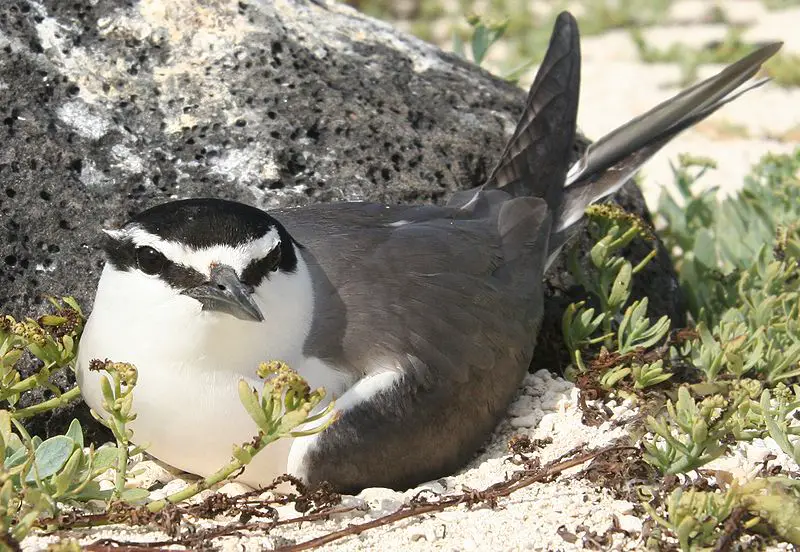
The Spectacled Tern is a beautiful seabird that belongs to the Laridae family. It has distinct grey wings and white head with black markings around its eyes, which give it the appearance of wearing glasses, hence its name.
This species is closely related to Bridled and Sooty terns, but less common than them due to low population numbers.
Recently they were split into their own genus Onychoprion along with Aleutian tern.
They are found in coastal areas such as tropical islands or coral reefs where they breed during summer months before migrating further south for winter season.
These birds feed on small fish by diving from great heights into water bodies like lakes or oceans making them an interesting sight when seen up close.Scientific classification:
| Kingdom | Animalia |
| Phylum | Chordata |
| Class | Aves |
| Order | Charadriiformes |
| Family | Laridae |
| Genus | Onychoprion |
| Species | O. lunatus |
Also Featured In: Samoa Birds,
7. Trindade Petrel
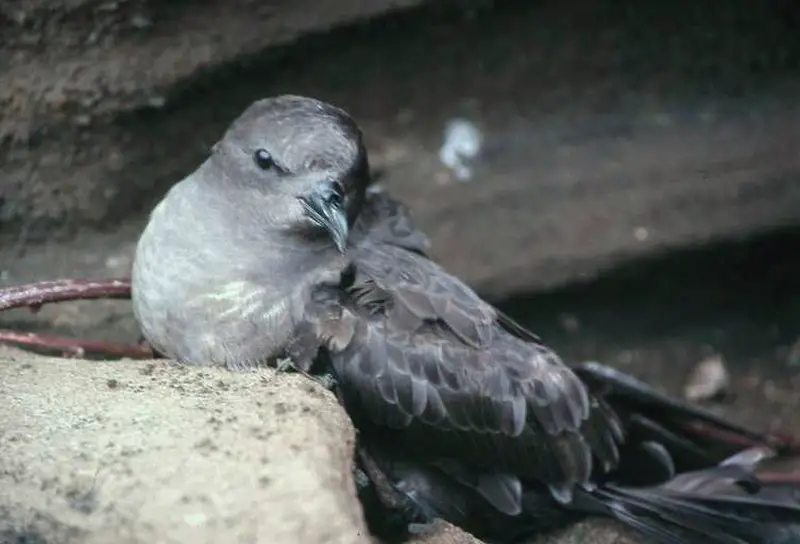
The Trindade petrel is a species of seabird belonging to the gadfly petrel family. It has an average size of 35-39 cm and wingspan varying between 88-102 cm.
Its plumage can be dark, light or intermediate between the two shades. Two populations were initially thought to belong to this species: one in the south Pacific and another near Trinidad Island off Brazil’s Atlantic coast, hence its name ‘Trindade’ petrels.
This bird depends on open ocean for feeding as it primarily feeds on fishes, cephalopods and crustaceans like krill & squids which are found there only.
Unfortunately their population numbers have been declining due to habitat destruction caused by human activities such as overfishing & pollution leading them towards endangerment.Scientific classification:
| Kingdom | Animalia |
| Phylum | Chordata |
| Class | Aves |
| Order | Procellariiformes |
| Family | Procellariidae |
| Genus | Pterodroma |
| Species | P. arminjoniana |
Also Featured In: Bermuda birds, Common Birds of Turks and Caicos Islands
8. Great Frigatebird
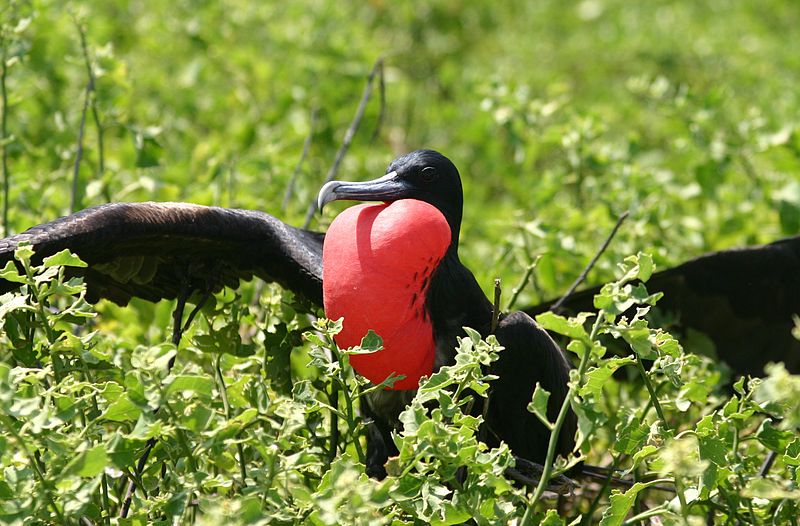
The Great Frigatebird is a large seabird found in tropical regions of the Pacific and Indian Oceans, as well as the South Atlantic.
It can grow up to 105 cm long with black plumage, making it one of the largest frigatebirds around.
The species also exhibits sexual dimorphism; males have bright red throat pouches while females have white or grey ones instead.
These birds nest in colonies on islands or near coastal areas where they feed off fish schools, squid and other marine life that they snatch from their dive-bombing prey.
They are highly adept at soaring for hours above oceanic waters searching for food sources below them before dives down into shallow water to catch unsuspecting meals.Scientific classification:
| Kingdom | Animalia |
| Phylum | Chordata |
| Class | Aves |
| Order | Suliformes |
| Family | Fregatidae |
| Genus | Fregata |
| Species | F. minor |
Also Featured In: Christmas Island Birds, Birds of Kauai, Hawaii
9. Wandering Tattler
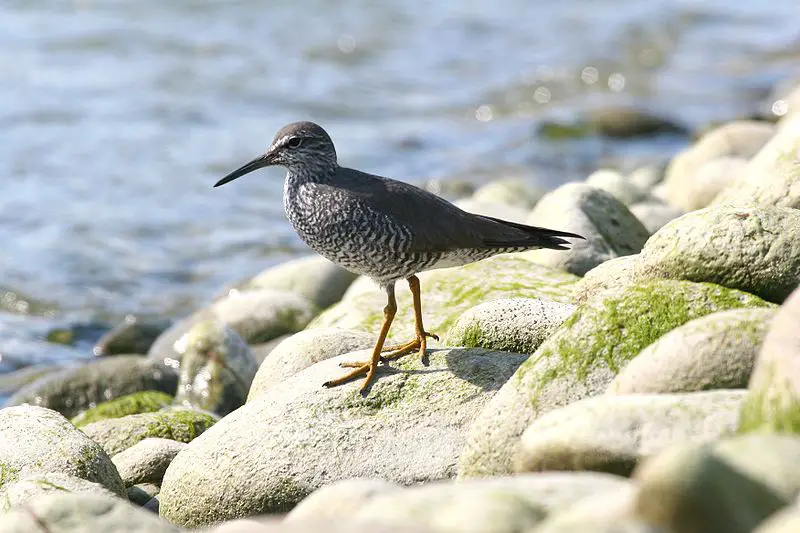
The Wandering Tattler is a medium-sized wading bird found in coastal areas throughout the world. It has unpatterned, greyish wings and back, as well as a scaly breast pattern that extends onto its belly.
Its closest relative is the Gray-tailed Tattler (Tringa brevipes). The species feeds on insects and crustaceans which they hunt along shorelines. They also take advantage of low tide to feed on exposed mudflats or sandbars.
During migration season these birds can be seen flying long distances over open ocean waters with their characteristic fluttering flight pattern before reaching land again to rest and refuel for another journey ahead.Scientific classification:
| Kingdom | Animalia |
| Phylum | Chordata |
| Class | Aves |
| Order | Charadriiformes |
| Family | Scolopacidae |
| Genus | Tringa |
| Species | T. incana |
Also Featured In: Cook Islands birds, Hawaii Big Island Birds You Should Know
10. Kermadec Petrel
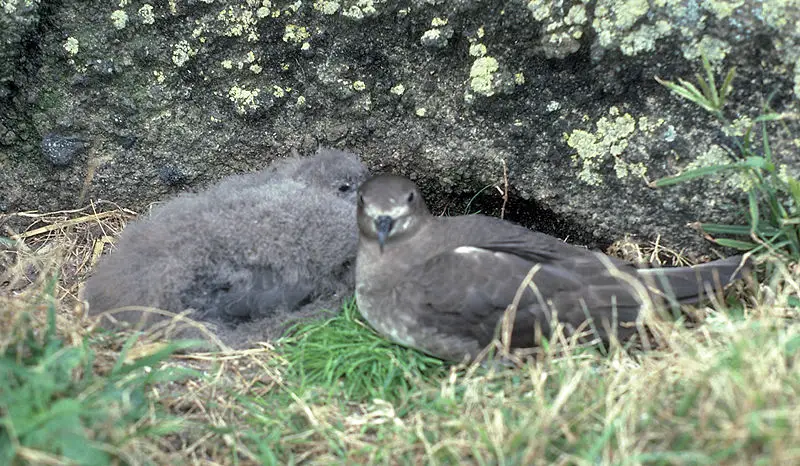
The Kermadec petrel is a species of gadfly petrel that can be found in the Pacific Ocean from Lord Howe Island to the Juan Fernández Islands.
It has a wingspan of 100 cm and is usually 38 cm long, with three distinct morphs – light, dark and intermediate.
This bird feeds on squid, fish and other marine creatures as its primary food sources. The Kermadec petrel breeds in colonies near oceanic islands or offshore rocks during breeding season but migrates further away when not breeding.
Although it may rarely be seen west of Lord Howe island, this species remains quite widespread throughout its range due to its strong ability to fly over long distances at high speeds for extended periods of time.Scientific classification:
| Kingdom | Animalia |
| Phylum | Chordata |
| Class | Aves |
| Order | Procellariiformes |
| Family | Procellariidae |
| Genus | Pterodroma |
| Species | P. neglecta |
Also Featured In: Birds that Live in Gold Coasts,
11. Black-Winged Petrel
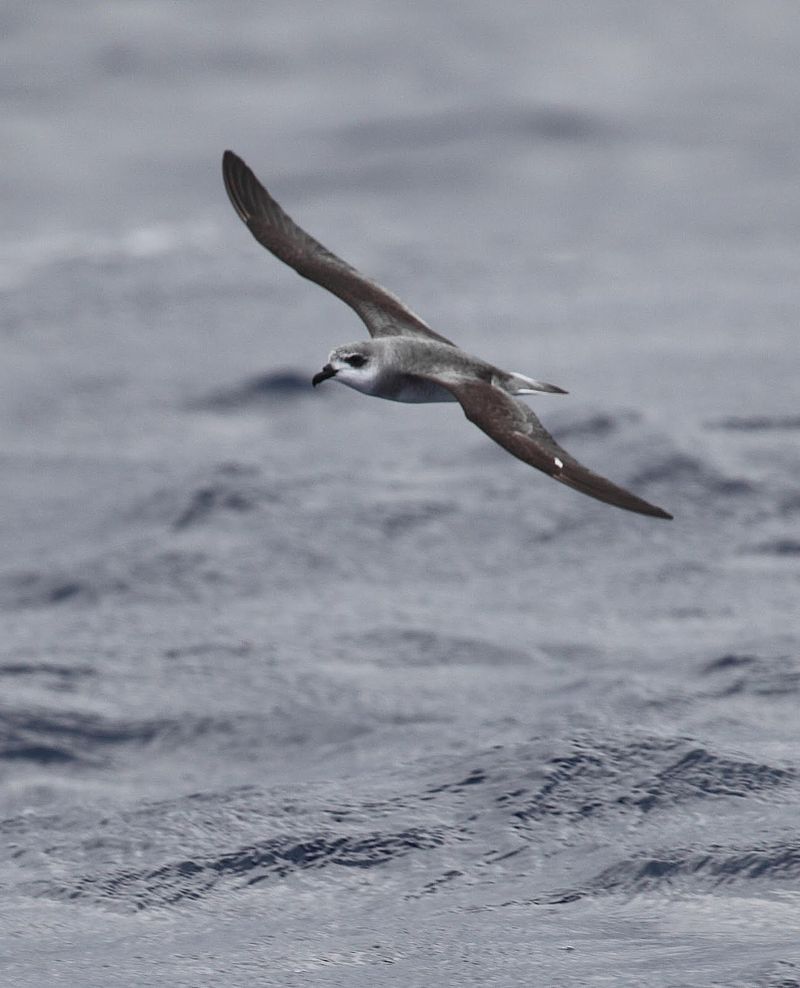
The Black-winged Petrel is a species of seabird that has an impressive wingspan, averaging 67 cm. It can be found in tropical and subtropical regions of the East Pacific Ocean where it breeds on islands.
During migration, it spends its time out at sea before returning to breed again. They are small birds with long narrow wings and average 29cm in length.
Its plumage is mainly dark greyish brown above while white below with black markings on the wingtips which gives them their distinct name “black-winged petrel”.
These beautiful birds live off fish they find close to ocean surfaces but also eat squid as well as other crustaceans too.Scientific classification:
| Kingdom | Animalia |
| Phylum | Chordata |
| Class | Aves |
| Order | Procellariiformes |
| Family | Procellariidae |
| Genus | Pterodroma |
| Species | P. nigripennis |
Also Featured In: Birds You’ll Find in the Marshall Islands, Birds of New Caledonia
12. Christmas Shearwater
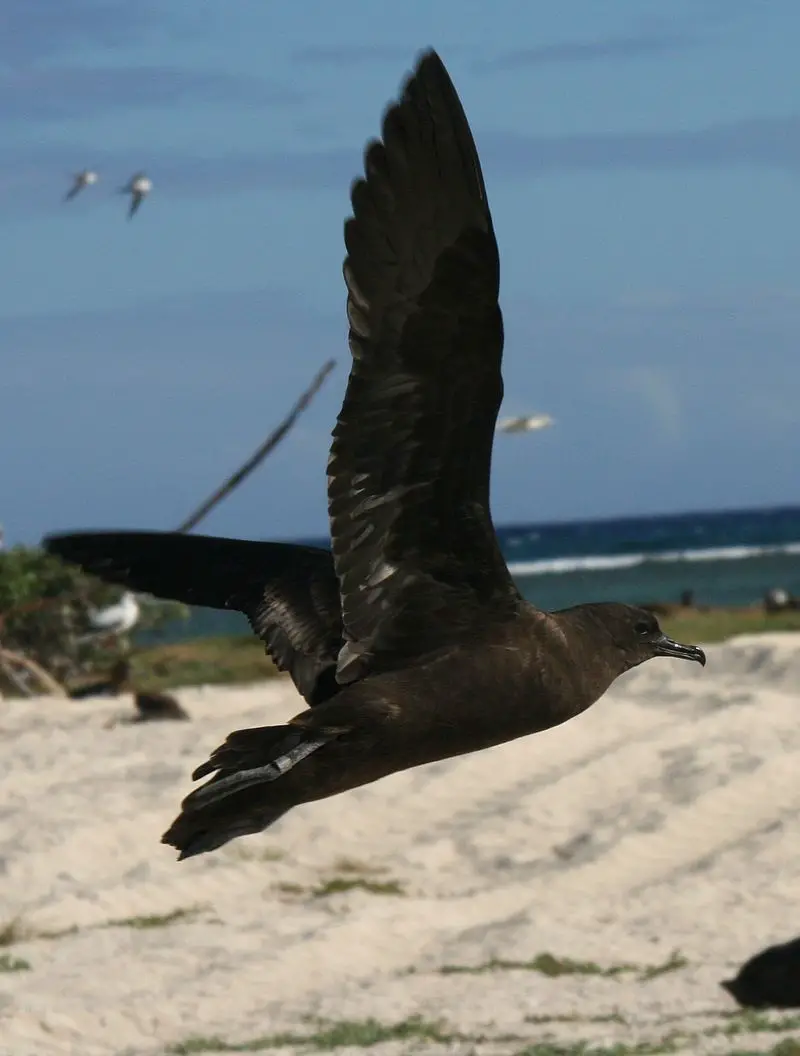
The Christmas Shearwater, also known as ‘Ao’u, is a medium-sized tropical bird found in the Central Pacific.
It belongs to an ancient species of small Puffinus shearwaters and its closest living relative is the Galápagos Shearwater.
Its remote nesting habits make it difficult to study and little information about this mysterious creature has been gathered until now.
The Christmas Shearwater typically flies low over the water at high speeds with quick wing beats, searching for food like fish or jellyfish near the surface of warm waters during night time hours.
These birds are capable of long distance flights that span hundreds if not thousands of miles. With their unique white bellies speckled black feathers on top they really stand out from other aquatic creatures.Scientific classification:
| Kingdom | Animalia |
| Phylum | Chordata |
| Class | Aves |
| Order | Procellariiformes |
| Family | Procellariidae |
| Genus | Puffinus |
| Species | P. nativitatis |
Also Featured In: Most Common Oahu Birds, Most Common Birds of Midway Atoll
13. Chimango Caracara
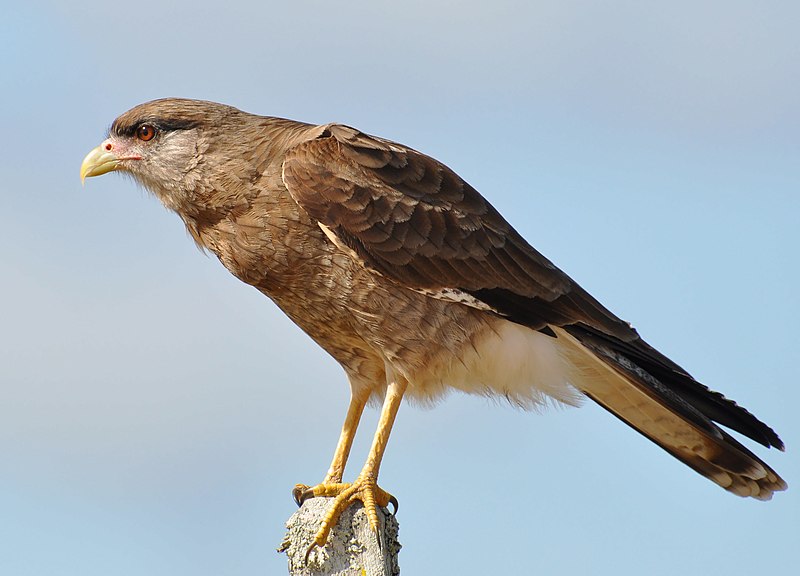
The chimango caracara is a bird of prey belonging to the falconidae family found in South American countries like Argentina, Bolivia, Brazil, Chile, Paraguay, and Uruguay.
It is also known to be a vagrant on the Falkland Islands. The taxonomy of caracaras is still unresolved, and the placement of the chimango caracara in the falconidae family is disputed.
This bird species has distinct physical features, including a white throat, chestnut body, and long hooked beak, used to hunt for small mammals, insects, and other birds.
The population of the chimango caracara is believed to be stable, and the bird is one of the most studied raptors in South America.
Overall, the chimango caracara is an important predatory bird species in South America that plays an essential role in the ecosystem.Scientific classification:
| Kingdom | Animalia |
| Phylum | Chordata |
| Class | Aves |
| Order | Falconiformes |
| Family | Falconidae |
| Genus | Milvago |
| Species | M. chimango |
Also Featured In: Patagonia Birds You Should Know,
14. Diuca Finch
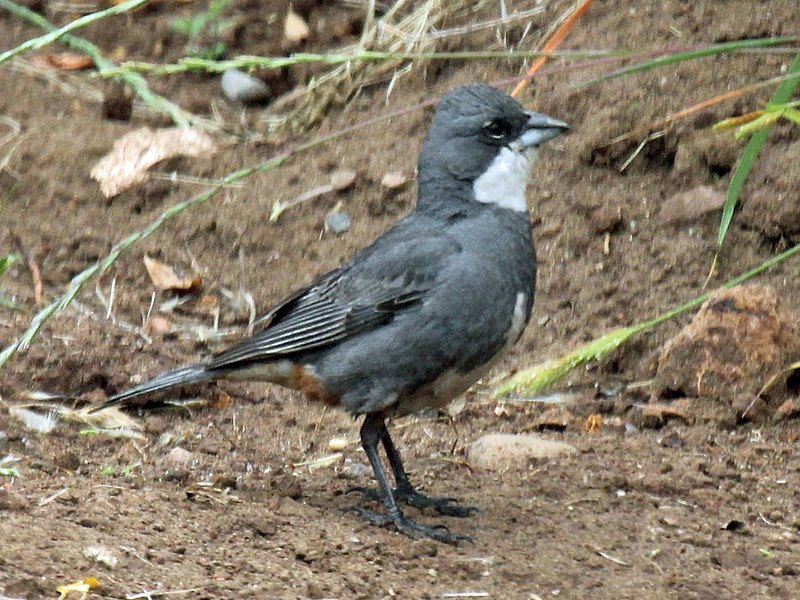
The Diuca finch is a unique species of bird in the Thraupidae family, and it’s the only member of its genus. It can be found in several South American countries, including Argentina, Bolivia, Brazil, Chile, and Uruguay.
The bird prefers to inhabit subtropical or tropical dry shrublands, as well as heavily degraded former forests. It is also known to reside in subtropical or tropical high-altitude shrublands.
Although first described in 1782 by the Chilean, not much is known about the behavior or physical characteristics of the Diuca finch.
With its distinctive appearance and habitat preferences, this bird remains an intriguing subject of study for scientists and bird enthusiasts alike.Scientific classification:
| Kingdom | Animalia |
| Phylum | Chordata |
| Class | Aves |
| Order | Passeriformes |
| Family | Thraupidae |
| Genus | Diuca Reichenbach, 1850 |
| Species | D. diuca |